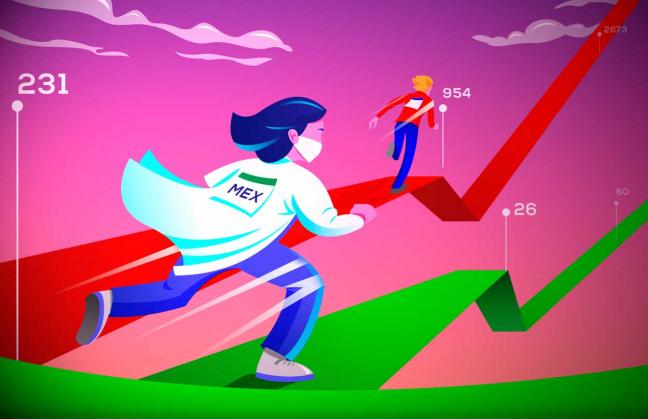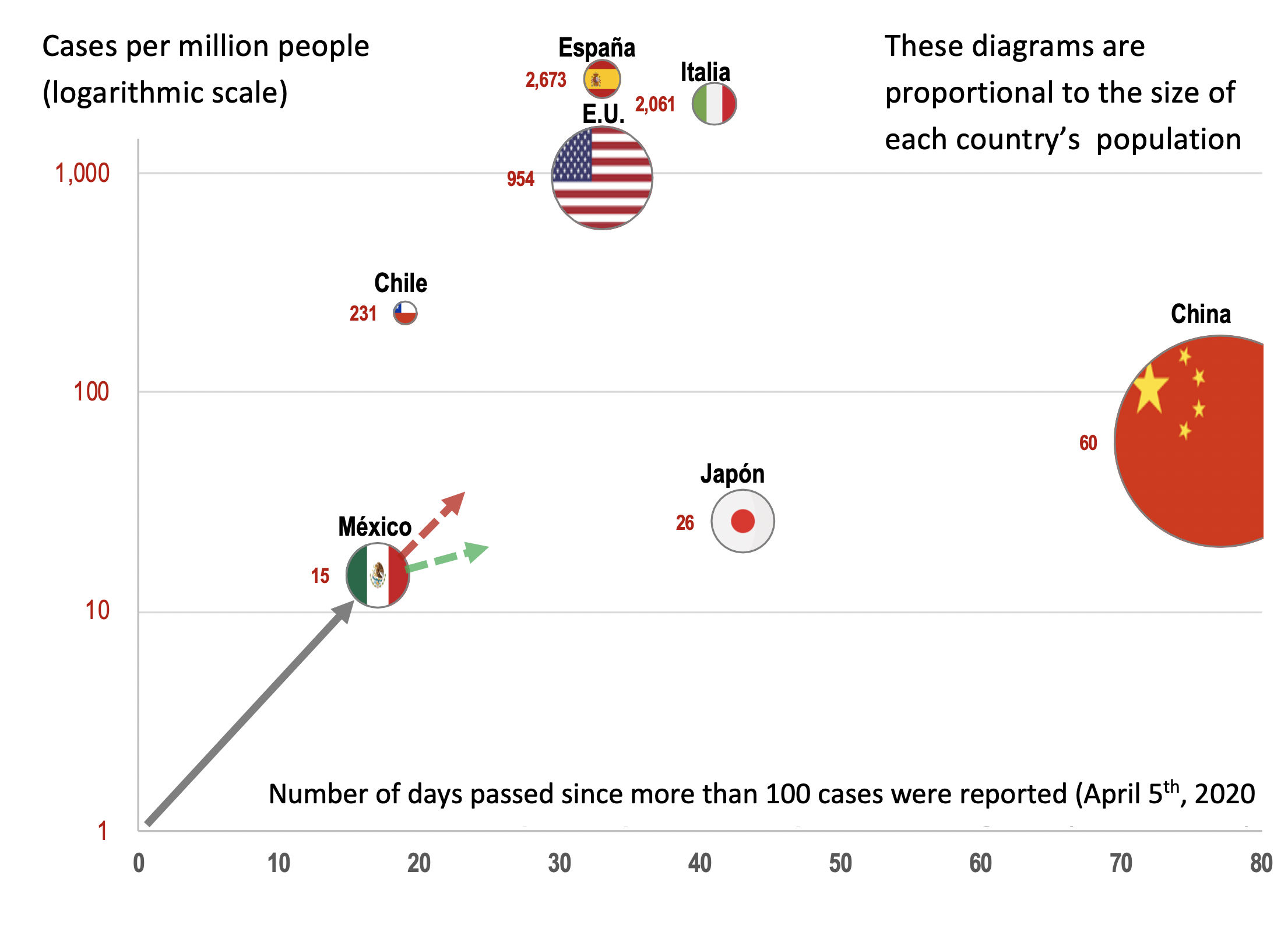COVID-19: Which Path Will Mexico Take?
We are at the point where we must decide whether to take the green path of least contagion or the red path of overcapacity

Imagine that there is a small hospital that is only capable of taking care of two patients in critical conditions. Should there be up to two patients in this condition, the hospital will have the capacity to take care of them. This is the green path. The real problem arises when capacity is exceeded and critical patients have to wait until a station is cleared. For a critical patient, this wait can be catastrophic. This is the red path. What path do we want for Mexico in this pandemic? We have to decide as a society... and we are running out of time.

COVID-19 is a contagious disease, which can be asymptomatic at times and when it comes to critical patients, it requires a long recovery period. Without contingency measures, we may exceed the capacity of our health care facilities to treat this and other diseases.
Our challenge is to keep the speed of infection from spawning several critical cases that would exceed the capacity of our health care facilities.
Keeping track of how fast this outbreak is spreading in different regions is not an easy task. There are asymptomatic patients, as well as places where fewer tests are conducted, and others where reliable information is not gathered quickly enough. There are also regions where the outbreak started earlier.
As part of a comparative analysis, seven countries were selected and a ratio of cases per million people was established. It makes sense to expect that the larger the population of a region, the more likely it is to have more cases. Since the spread of the disease did not start simultaneously all over the world, it is also reasonable to think that in the countries that suffered an outbreak first (China, USA, Italy, Spain), there are already more cases. For this analysis, the day on which more than 100 cases were reported was marked as Day 1. In addition to these four countries, we included Mexico, Chile (a Latin American country where the spread seems to be advancing faster) and Japan (similar to Mexico in the number of cases, but where the spread started earlier and does not seem to be advancing as quickly).
The information shown in the following chart is important. Mexico is now at a turning point, where we can still take collective action to avoid reaching the levels of contagion in countries like the United States, Italy and Spain. It is also true that our situation is not as serious as the one Chile seems to be facing (too many cases for the size of its population), but let's look at countries such as Japan, which have achieved a slower rate of infection.

We all want to take the green path. But it is not so much about what we want, but about what we do to walk this path... Our actions depend on the group we are in, according to the following chart:

The red groups (II, III and IV) represent the three types of infected cases. These groups have to stay strong, follow medical advice, be patient and know that they have everyone else's support.
Group I represents the group of healthy people, which can be divided into 3 main categories:
- Front line: This group includes everyone who can't follow the quarantine because they work for the health system, food/hygiene supply chains, or provide basic services. This group must protect themselves as much as possible, continue to do their work and be recognized as everyday heroes.
- Normal lifestyle: In this group, we find people who do not need to go out, but do so out of ignorance or negligence; it is up to them to get informed and leave this group. However, we must also keep in mind that this group includes all of those who cannot stay indoors, either because they do not have a place to stay or because they are living from hand to mouth. They must try to endure and hope that the rest of us can help them...
- Conscious participation: This group includes all of us who can and do stay in quarantine. But this does not mean that there is nothing else we can do. On the contrary, we belong to a group that now has some time to spare and we have to hdo as much as we can to help. To be specific, we can:
- Acknowledge that we might actually belong to Group II. Without a test, we cannot know for sure if we're carrying the virus even if we are not showing symptoms. Thus, we could infect other people. We have to stay isolated to reduce the chances of infecting others.
- Provide high-quality information. Forwarding false or inaccurate information is a form of contagion. A pandemic is something we must take seriously. We must check our sources and keep ourselves well informed... And if you have a good understanding of what is going on, you can help by explaining the facts to others.
- Support the other groups. It's our turn to help everyone else. you can approach formal organizations or think about how you can contribute with your skills. We need to preserve both our physical and our mental health.
- Stay in this group. Try to avoid exposure so you don't catch the virus and overwhelm the capacity of available facilities. Think of us as the second front line. Some of us might even have to go ahead and help someone else later on.
In Mexico, we are at a point in which we must decide through our actions if we are going to take the green path, with fewer casualties, or the red path, where capacity is surpassed. Unfortunately in this pandemic, there is no truce; there will be no “white road”.
We need to spend less time on social media and more time on getting things done. I'm sure you can contribute a lot, or maybe just a little, but in a scenario like this, every bit of help counts. Mexican solidarity is renowned and recognized all over the world. We are counting on you.



